The triple straight stitch by hand is a well-known stitch among machine stitches. So I was thinking, is triple straight stitch by hand possible? 🤔
Yes, you can do a triple straight stitch by hand. It just takes a little more time.
Why? Well, on a sewing machine, this stitch moves forward, then backwards, and then forward in one go. You just need a special foot.
But on hand, you can’t do it all at once. So yes, you can copy the same thing. You’ll just need to go over the same line three times to build it up.
And how can you do that? Well,
Triple Straight
To do a hand triple straight stitch, do a running stitch along the line, then go back over it twice more to make the seam thick and strong.
Sounds confessing? Ok, let’s figure it out more.
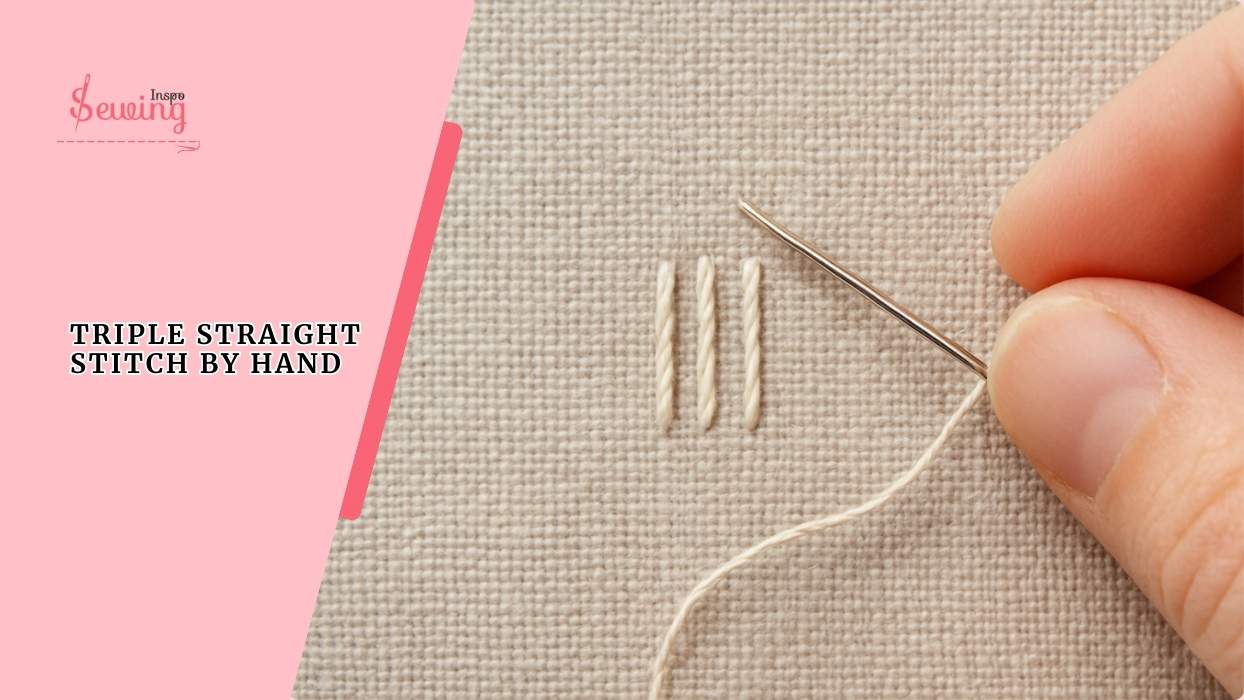
Table of Contents
What Is A Hand Triple Straight Stitch?
A hand triple straight stitch is a strong sewing stitch you make by going over the same line of stitching three times by hand.
It’s basically a way to copy the machine’s triple straight stitch, but done with a needle and thread.
It’s used for repairing heavy fabrics (like denim), securing seams that take a lot of stress (bags, cushions, or outdoor gear), and adding extra strength where a single line of stitching might break.
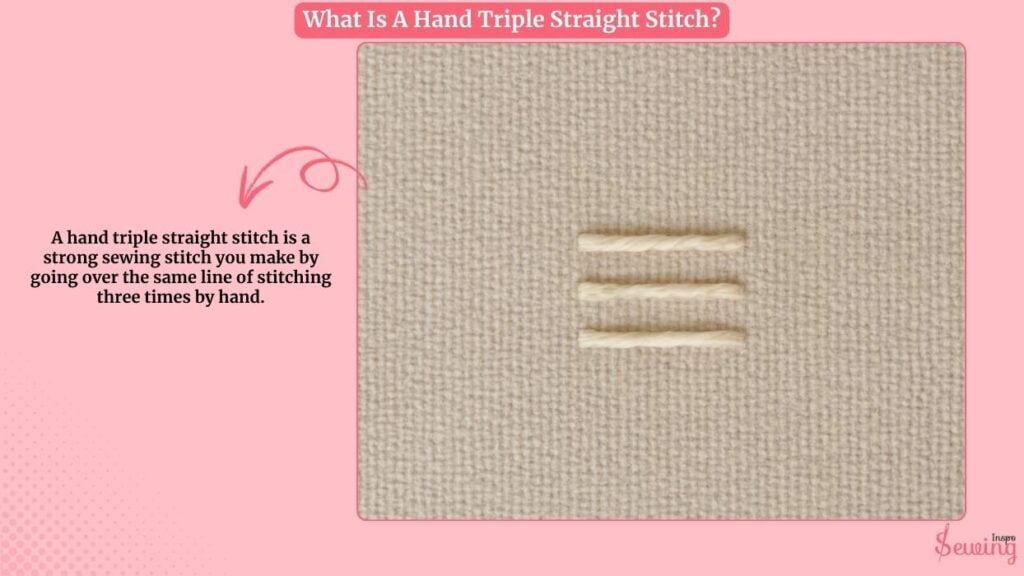
What Is The Best Triple Straight Stitch By Hand?
There isn’t actually a true triple stitch by hand. Whatever people stitch is to mimic machine triple-stitch versions.
But the backstitch is by far the best choice because it creates a continuous line. That creates a solid line that can be easily reinforced for extra strength. I usually use it for seams, heavy-duty fabrics, or anywhere I know the stitching will be under stress.
Other options can also work depending on the project:
- Stem Stitch
- Running Stitch (Reinforced)
- Overlapping Straight Stitch
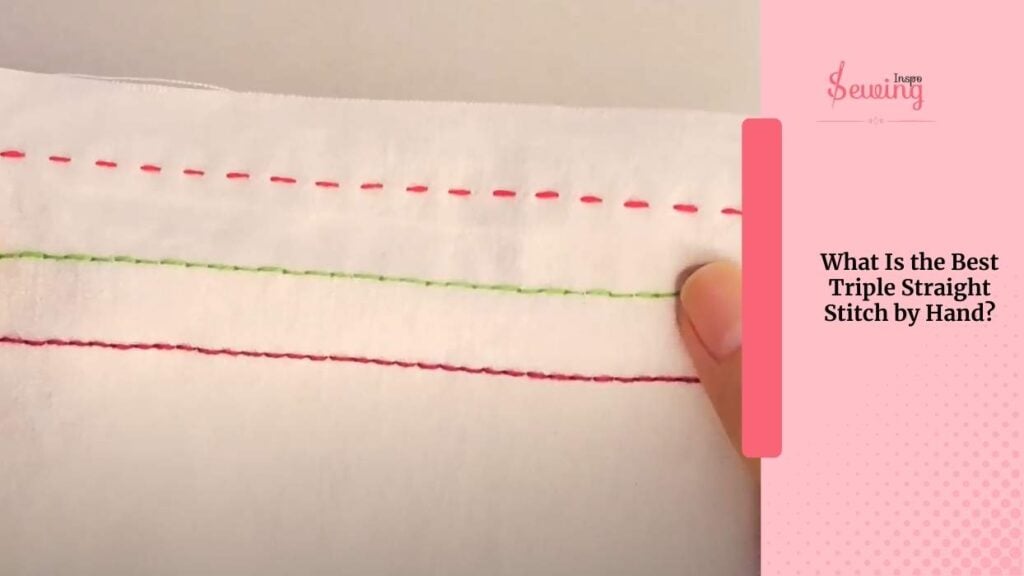
In short, while there are several options, the backstitch is the best for a triple straight stitch by hand.
It’s the strongest stitch on almost any fabric. The other stitches are useful if you want a curved effect, lighter strength, or decorative flair.
How To Do A Triple Straight Stitch By Hand?
To do a triple straight stitch by hand, follow these six steps,
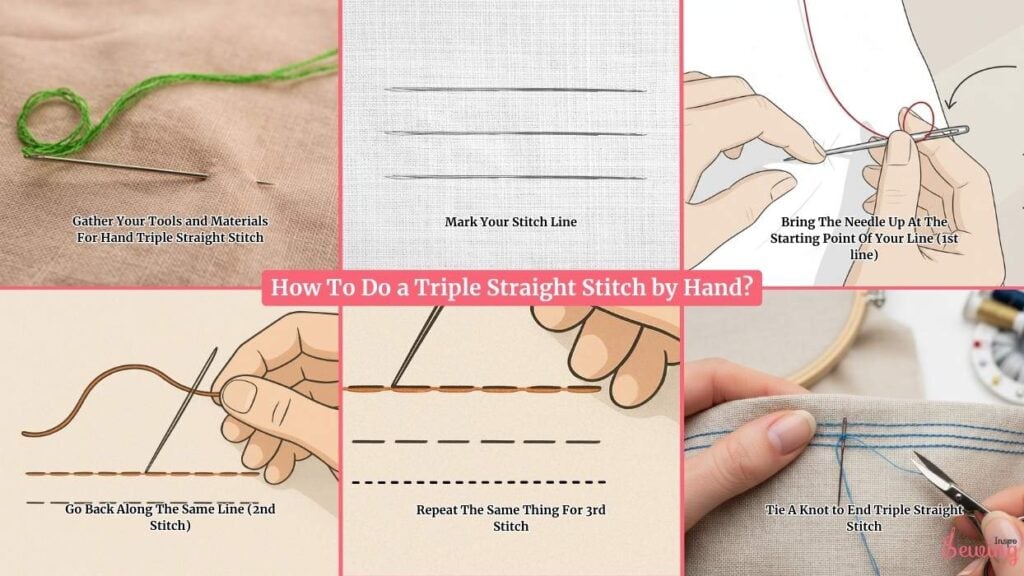
Hand Triple Straight Stitch Tools and Materials For
Before you start stitching, make sure you have:
- Needle: A sharp hand-sewing needle, size 5–7 for medium fabrics, size 8–9 for finer fabrics.
- Thread: Use strong cotton, polyester, or floss. For maximum strength, you can double the thread.
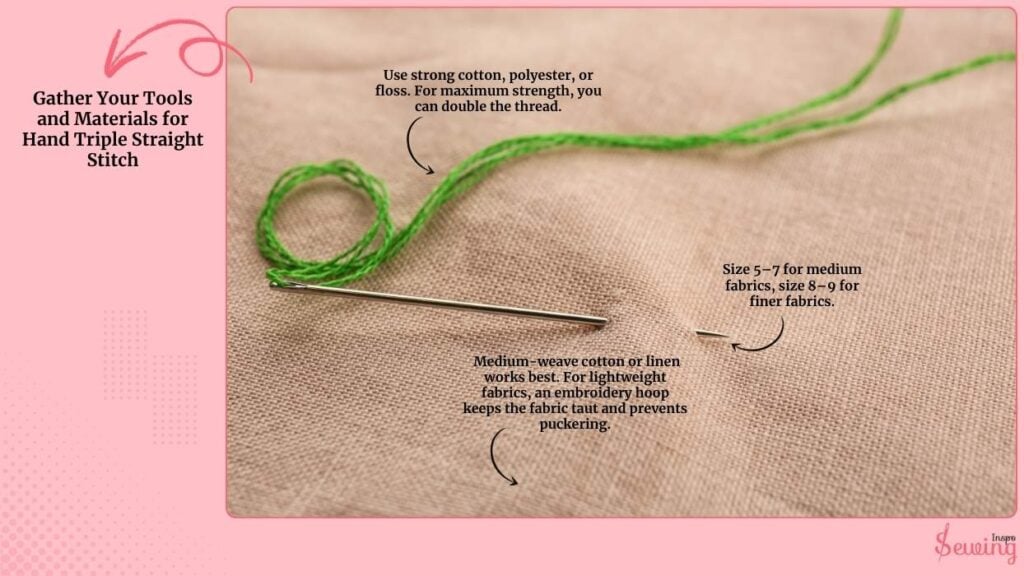
- Fabric: Medium-weave cotton or linen works best. For lightweight fabrics, an embroidery hoop keeps the fabric taut and prevents puckering.
Mark Your Stitch Line
Use a water-soluble pen, chalk, or tailor’s tackstitch pencil to draw a straight line on the fabric. The line acts as your guide, keeping your stitches straight and evenly spaced.
For curved lines, mark small dots at regular intervals along the curve. Even if your markings are slightly uneven, the reinforcement in the triple stitch will smooth out the line.
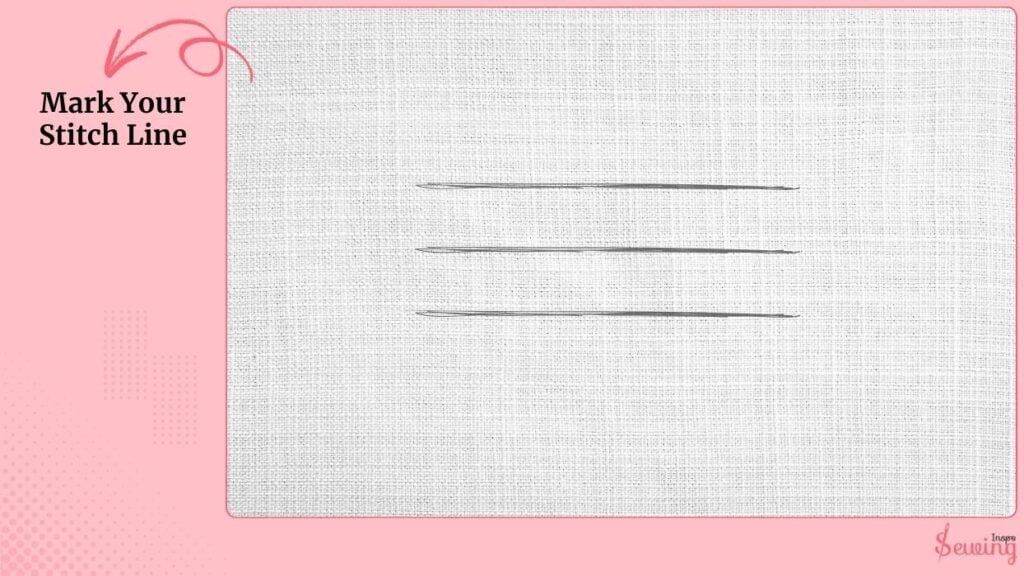
Bring The Needle Up At The Starting Point Of Your Line (1st line)
Bring the needle up at the starting point of your line. Take a small, straight stitch forward. Keep the length suitable for your sewing project. I keep 3–5 mm for general work, smaller for fine embroidery.
Insert the needle into the fabric at the end point of the stitch and bring it up one stitch-length ahead. Continue stitching along the line until you reach the end.
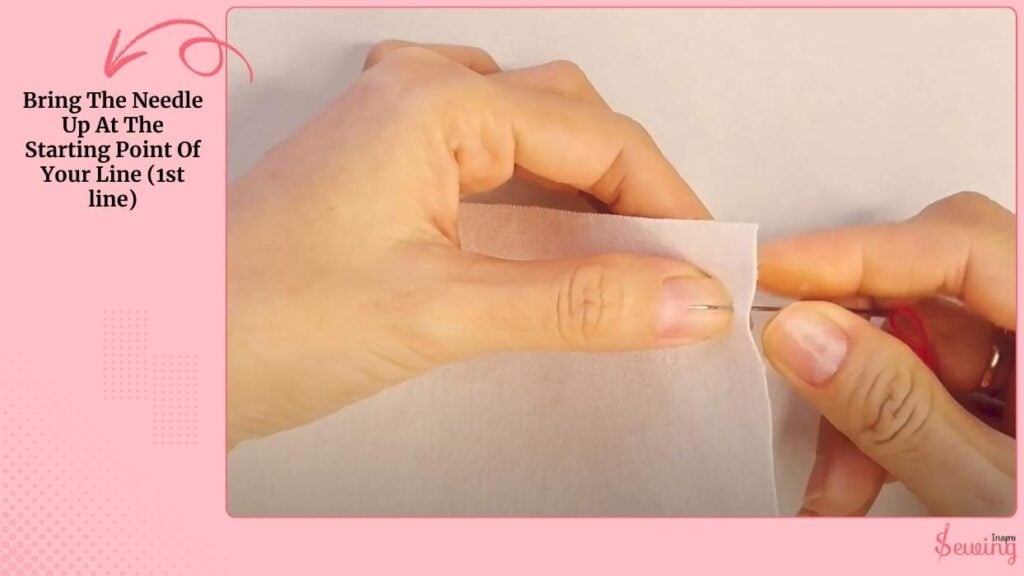
Tip: Keep stitches evenly spaced. If the spacing varies, the reinforced passes will help even it out.
Go Back Along The Same Line (2nd Stitch)
Go back along the same stitch line. Insert the needle into the same points (or very close to them) as your first pass. Pull the thread firmly but gently, so the stitches sit flat and neat.
Make sure the second pass aligns perfectly with the first. This is what gives the “triple stitch” strength.
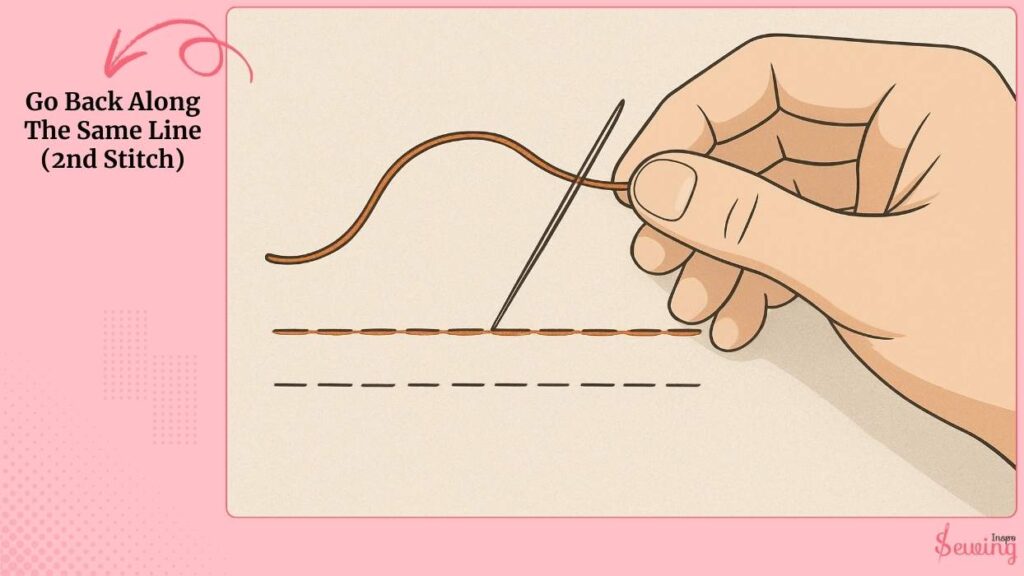
Expert Tip: Keep the needle perpendicular to the fabric as you go. This prevents the stitches from twisting or lying unevenly.
Repeat The Same Thing For 3rd Stitch
Repeat exactly as before for a third time. This is what gives the stitch its reinforced, triple strength. Watch your thread tension: too tight and the fabric puckers; too loose and the stitches look sloppy.
The goal is three parallel lines of thread that sit neatly side by side. It formed a strong and straight stitch.
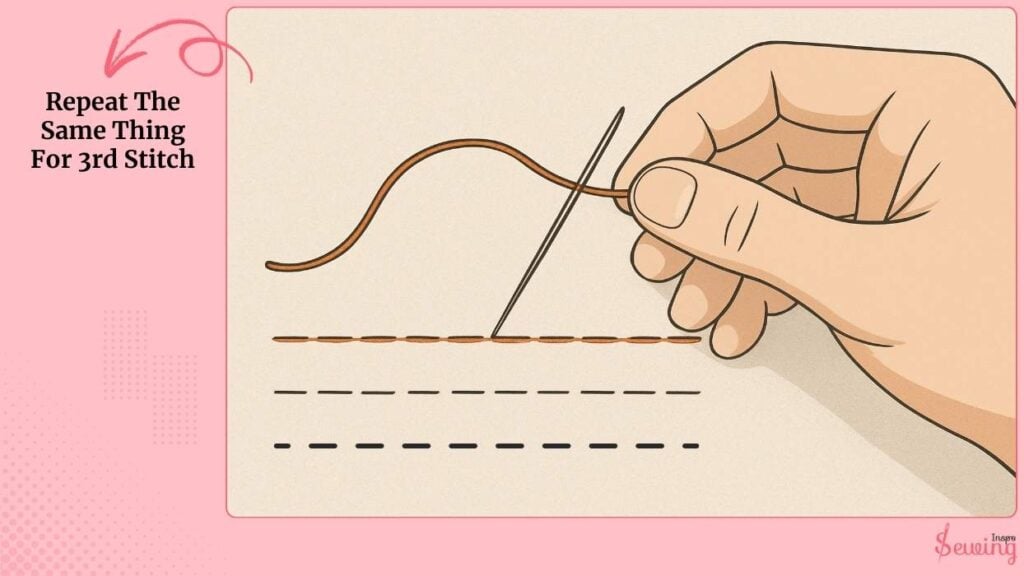
Tie A Knot To End Triple Straight Stitch
When you reach the end, tie a secure knot at the back of the fabric. Trim the thread tail close to the knot. Optionally, weave the tail under a few nearby stitches to hide it completely.
Warning: If the stitch line will be under stress (like a seam), knot multiple times for extra security.
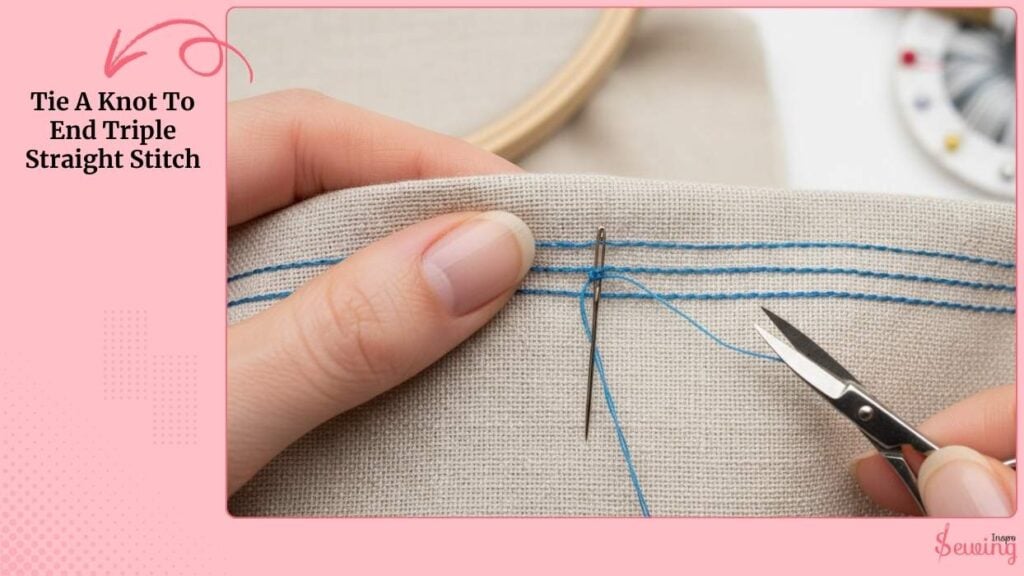
That’s it! You got the triple stitch just like machine one. It is little bit time consuming but it is worth it.
Frequently Asked Questions
Can I use a triple straight stitch decoratively?
Absolutely! Reinforced backstitches or stem stitches can add texture and visual interest to embroidery designs or decorative seams.
How do I make sure my triple straight stitch looks neat?
Keep your stitches even in length, maintain consistent tension, and follow a guide line on the fabric. Reinforcing the same line carefully ensures a professional finish.
What fabrics work best for this stitch?
Medium to heavy fabrics like cotton, linen, denim, or canvas work best. But with smaller stitches and lighter thread, it can also be used on delicate fabrics.
Now it’s your turn
That’s how i did triple straight stitch by hand.
What’s your way to do this stitch?
Share it with us.
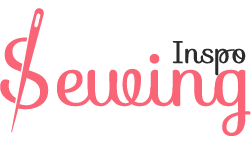
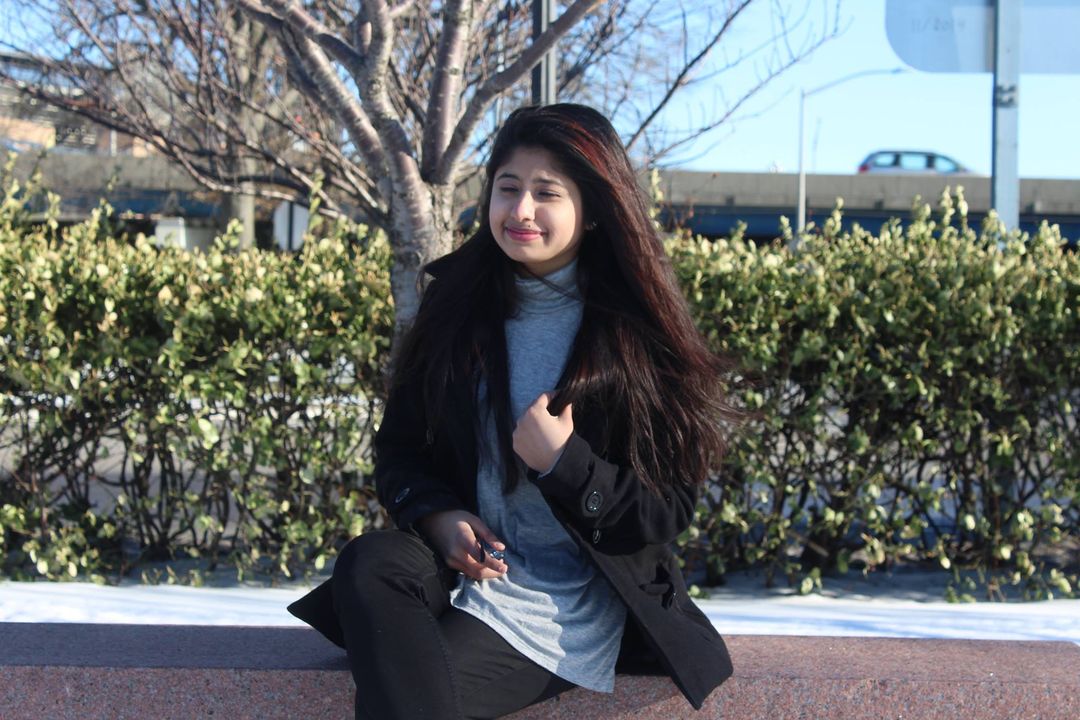
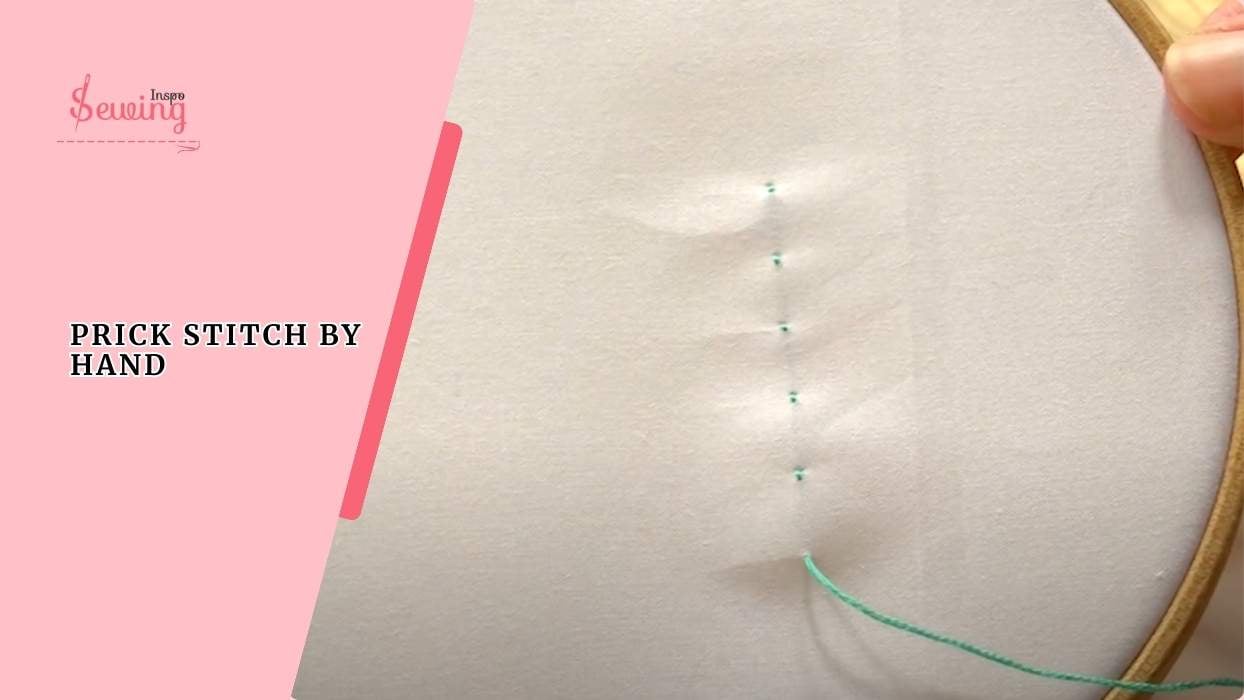
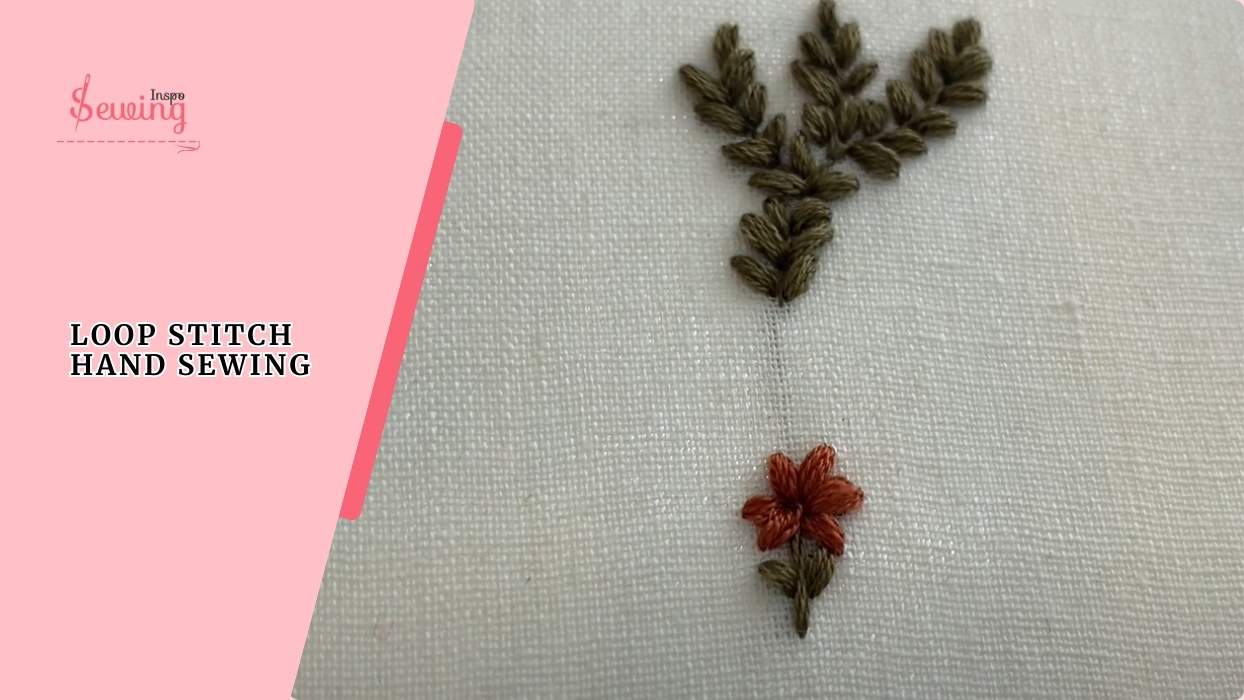
Leave a Reply